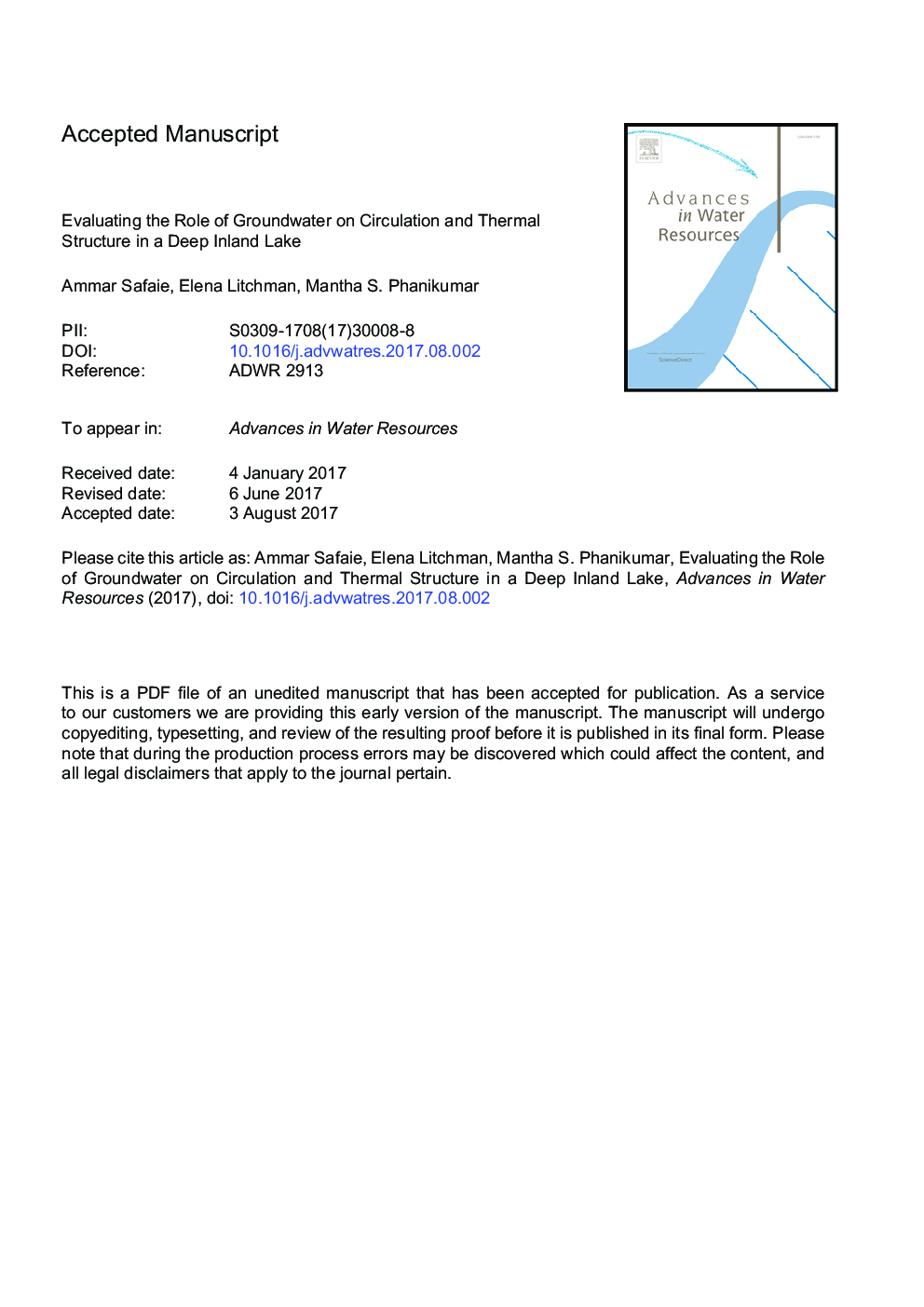| Article ID | Journal | Published Year | Pages | File Type |
|---|---|---|---|---|
| 5763893 | Advances in Water Resources | 2017 | 62 Pages |
Abstract
Groundwater levels in many aquifers are declining due to anthropogenic activities such as increased high-capacity pumping for agriculture or climate-related decreases in natural recharge rates or a combination of factors. At the same time, lake surface temperatures are on the rise in response to a warming climate. As a first step toward evaluating the impacts of declining groundwater levels and warming lake surface temperatures on coupled biophysical processes in lakes, we evaluate the role played by groundwater in circulation and thermal structure within Gull Lake, a deep, dimictic, inland lake in Michigan, USA. A three-dimensional, unstructured grid hydrodynamic model was developed to investigate physical processes in the lake during the summer stratified period. We used high-resolution Acoustic Doppler Current Profiler observations of currents and lake levels as well as temperature data from thermistor chains to test the numerical models. The quality of meteorological forcing fields reconstructed using data from a network of weather stations surrounding the lake were assessed using outputs from a mesoscale numerical weather forecasting model, Weather Research and Forecasting (WRF) and vice versa. Model descriptions of internal heating due to the penetration of shortwave radiation as well as turbulent mixing within the water column were improved using in situ observations. Our results indicate that meteorological forcing fields, carefully reconstructed using WRF model outputs, can provide results comparable to those obtained from a network of weather station data, an important conclusion for modeling lakes in remote parts of the world. The observed low hypolimnetic temperatures could only be explained by taking the groundwater contribution into account and water column temperatures will increase by 8â°C or more on average if the groundwater contribution is absent. These results have implications for a number of key biophysical processes that control the structure and function of lake ecosystems including the growth rates of algae, dissolved inorganic nitrogen levels in the lake as well as the depletion of oxygen in deeper layers.
Related Topics
Physical Sciences and Engineering
Earth and Planetary Sciences
Earth-Surface Processes
Authors
Ammar Safaie, Elena Litchman, Mantha S. Phanikumar,
